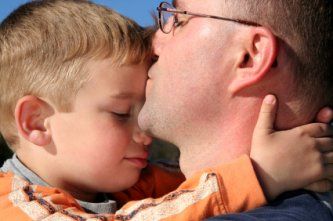Resilience
Everyday Trauma, Everyday Resilience
Resilience develops not out of catastrophe, but healing from everyday disruption
Posted January 4, 2015

When Frank was a young boy, and he committed some typical toddler transgression such as having a meltdown when it was time to leave the playground, his father would slap him across the face, hurting and humiliating him in a very public way.
When I spoke with Frank over 20 years later, in the context of helping him with his own son Leo's frequent tantrums in my behavioral pediatrics practice, he did not describe this experience as "trauma." Rather, he described it in a very matter-of-fact tone.
But when we explored in detail his response to his son's tantrums, we discovered that, flooded by the stress of his own memories, Frank in a sense would shut down. Normally a thoughtful and empathic person, he simply told Leo to "cut it out." As we spoke he recognized how he was emotionally absent during these moments, which were increasing in frequency. It seemed as if Leo was testing Frank, perhaps looking for a more appropriate response that would help him manage this normal behavior. Once this process was brought in to awareness, Frank was able to be present with Leo- to tolerate his tantrums and understand them from his 2-year-old perspective. Soon the frequency and intensity of the tantrums returned to a level typical for Leo's developmental stage. Frank, greatly relieved, once again found himself enjoying his son.
What Frank experienced as a young child might be termed "quotidian" or "everyday" trauma. It was not watching a relative get shot, or having his house washed away in an avalanche. It was a daily mismatch with his father- he was looking for reassurance and containment and instead got a slap across the face. It was what leading researcher Ed Tronick would term "unrepaired mismatch." Frank, in a way that is extremely common- termed "intergenerational transmission of trauma" was then repeating this cycle with his own child. When this dynamic was brought in to awareness, was able to "repair the mismatch," setting his relationship with his own son on a healthier path.
Tronick, who runs the Infant Parent Mental Health Postgraduate Certificate Program at UMass Boston, explains this process in a paper entitled Quotidian resilience: Exploring mechanisms that drive resilience from a perspective of everyday stress and coping. Resilience is a capacity that develops over time through the typical misattunments that inevitably occur between parent and child. D. W. Winnicott, pediatrician turned psychoanalyst, coined the phrase "the good-enough mother" to describe this phenomenon.Quotidian trauma, on the other hand, occurs when these mismatches are chronically unrepaired.
Steven Porges, a professor of psychiatry at University of North Carolina Chapel Hill, has developed through his research a fascinating theory to explain this process on a neurobiological basis. Tronick dramatically demonstrates the effects on an infant of these misattunement, or mismatches, in his Still Face experiment. In it we see how a young infant becomes highly distressed and disorganized when his mother does not respond to him in the typical way.
Many are familiar with the term "fight-flight" response to describe how when the body is faced with extreme stress, the sympathetic nervous system kicks in. What Porges brilliantly identifies is that in the setting of parenting, the drive to protect one's child may override this response. So what happens when a parent, like Frank, is flooded with stress, but cannot fight or take flight? A more primitive stress response, mediated not by the sympathetic, but by the parasympathetic nervous system, takes over. This is the "freeze response" that leads an animal to play dead in the face of overwhelming threat.
The parasympathetic nervous system innervates the muscles of the face and voice, controlling on a neurobiological basis that attunement that is so important to healthy development. Putting this together with Tronick's research, we can understand what happened to Frank. In a way that was unconscious and so out of his control, flooded with stress but with his fight-flight reaction unavailable, his parasympathetic system took over. The result is a literal still face. Leo's increasing tantrums match the increasing distress seen in the infant in Tronick's experiment.
Research at the interface of neuroscience and attachment is often applied to treatment of trauma with a capital "T." This research also has a great deal to teach us about prevention, as we can see in the story of Frank and Leo. When we have time and space to listen to parents and children, we can intervene in the earliest months and years to break the cycle of transmission of trauma and set development on a healthy path.


